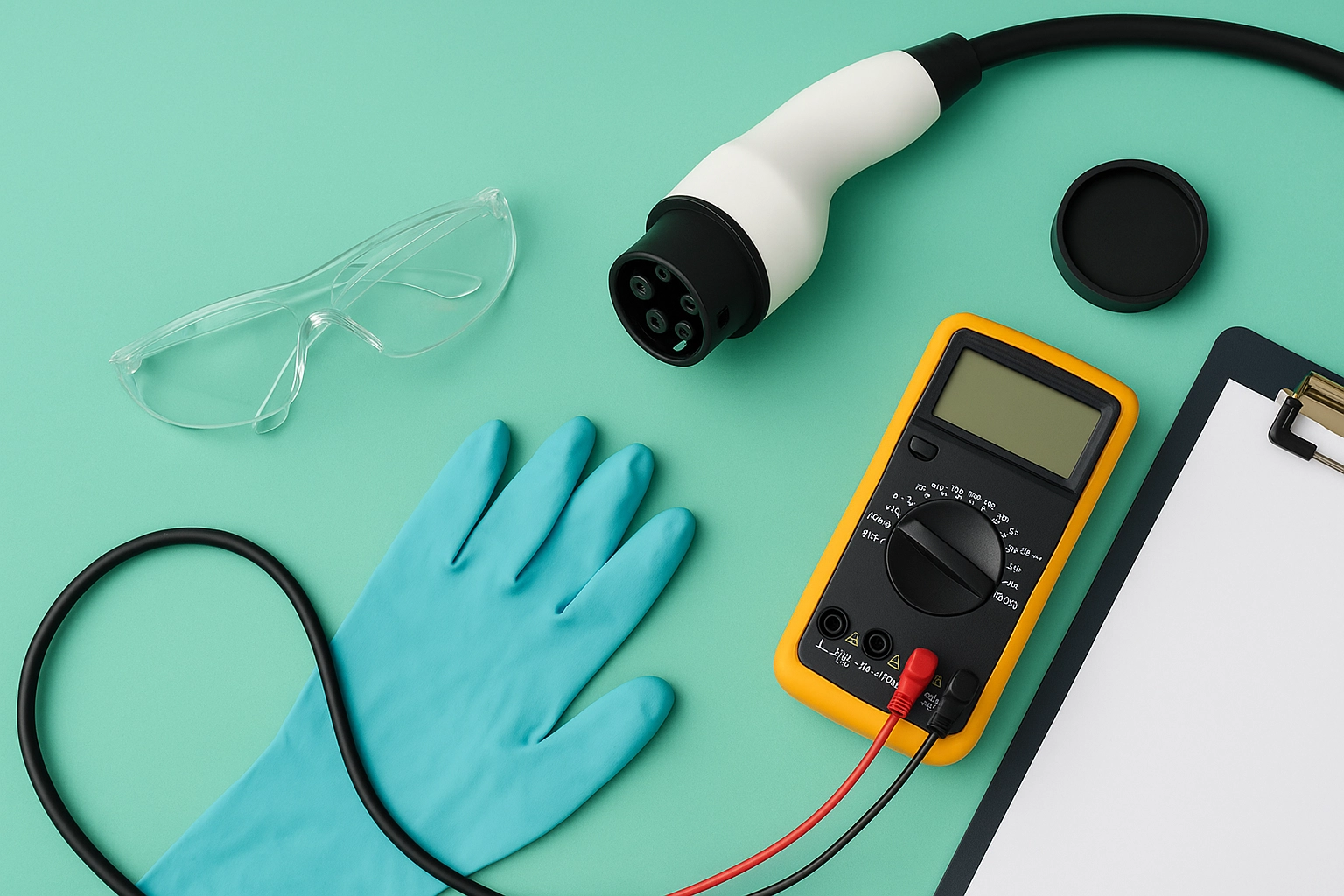IEC 61980-1 Wireless Power Transfer EV Charging Test
The IEC 61980-1 standard is pivotal in ensuring the reliability, safety, and interoperability of wireless power transfer (WPT) systems used for electric vehicle (EV) charging. This test evaluates the performance of WPT devices under real-world conditions relevant to EV charging applications. The standard focuses on key aspects such as power transmission efficiency, safety margins, electromagnetic compatibility (EMC), and user experience.
Testing according to IEC 61980-1 involves a series of comprehensive checks that simulate the operational environment of an EV charging station. These tests are essential for manufacturers to ensure their products meet stringent international standards, enhancing trust among consumers and regulatory bodies. The test protocol is designed to cover a wide range of scenarios, including different ambient conditions, vehicle types, and user behavior patterns.
The process begins with the setup of the WPT system in controlled environments that mimic various real-world settings. This includes outdoor parking spaces, garages, and charging hubs. The testing apparatus consists of an EV charger equipped with a wireless power receiver and transmitter units. The transmitter is placed under the vehicle, while the receiver connects to the vehicle’s battery.
The test parameters include measuring the efficiency of energy transfer between the transmitter and receiver, assessing electromagnetic interference (EMI) levels, evaluating safety features such as overcurrent protection and overheating detection, and ensuring compliance with EMC standards. The apparatus used for this testing includes high-precision power meters, EMI measurement equipment, and temperature sensors.
One of the critical aspects of the test is the simulation of different vehicle models and charging scenarios to ensure compatibility and reliability across various EV types. This involves prepping specimens by ensuring the vehicles are in a suitable state for testing, which includes checking battery levels, tire pressure, and ensuring all systems are operational.
The results of these tests are meticulously documented and reported. The report provides detailed insights into the performance metrics, highlighting any discrepancies or areas for improvement. Compliance with IEC 61980-1 ensures that manufacturers can market their products as safe, reliable, and interoperable within the global EV charging ecosystem.
By adhering to this standard, companies not only meet regulatory requirements but also enhance the overall user experience by ensuring seamless and efficient charging processes. The test results are crucial for quality managers, compliance officers, R&D engineers, and procurement teams as they provide a clear roadmap for product development and improvement.
Why It Matters
The IEC 61980-1 test is essential for several reasons. Firstly, it ensures the safety of users by verifying that WPT systems can operate without posing risks to human health or property. Secondly, compliance with this standard enhances interoperability among different EV charging devices and vehicles from various manufacturers. This interoperability is crucial for the widespread adoption of electric vehicles.
Moreover, testing according to IEC 61980-1 helps in optimizing energy efficiency, which is a key concern in the transition to sustainable transportation solutions. Efficient power transfer reduces energy waste and supports the development of more environmentally friendly charging infrastructure.
The standard also plays a vital role in reducing electromagnetic interference (EMI) that could affect other electronic devices. By minimizing EMI, WPT systems contribute to a cleaner and safer operating environment for all users. Lastly, compliance with IEC 61980-1 is essential for manufacturers seeking international recognition and market access, as it demonstrates their commitment to quality and safety.
The results of the test are crucial for stakeholders in the automotive sector, including quality managers who ensure product reliability, compliance officers who oversee regulatory adherence, R&D engineers who innovate new technologies, and procurement teams that source high-quality materials. These insights help in making informed decisions that drive industry growth and innovation.
Applied Standards
| Standard Number | Description |
|---|---|
| IEC 61980-1:2015 | Wireless Power Transfer Systems for Electric Vehicles - Part 1: General Requirements and Test Procedures |
| ISO/IEC 17025 | Laboratory Accreditation Requirements |
| CISPR 22 | Electromagnetic Compatibility (EMC) Limits for Information Technology Equipment |
| Standard Number | Description |
|---|---|
| IEC 61000-4-3 | Electromagnetic Compatibility (EMC) - Part 4-3: Test and measurement techniques - Electrostatic discharge immunity testing |
| ASTM D7825 | American Society for Testing and Materials Standard for Battery Operated Wireless Power Transfer Systems |
Benefits
The benefits of undergoing IEC 61980-1 testing are multifaceted. For manufacturers, it provides a competitive edge by ensuring that their products meet the highest international standards. This can lead to increased market share and customer trust. Compliance with this standard also facilitates easier compliance with local regulations and reduces the risk of product recalls.
For users, the benefits extend beyond mere functionality; they include enhanced safety, reliability, and performance. Safe and efficient charging ensures that EVs can be used without worry, contributing to a more sustainable transportation ecosystem. Additionally, interoperability among different devices and vehicles promotes a seamless user experience across various brands and models.
The test also supports the development of smart charging solutions by identifying areas for improvement in power transfer efficiency and energy management systems. This contributes to the broader goal of reducing carbon emissions and promoting renewable energy sources. For procurement teams, compliance with IEC 61980-1 ensures that they are sourcing reliable products from reputable manufacturers.
Lastly, adherence to this standard fosters international collaboration among stakeholders in the automotive sector, driving innovation and shared knowledge towards a greener future. By ensuring that EV charging systems meet these stringent requirements, the industry can collectively work toward more efficient and sustainable transportation solutions.





